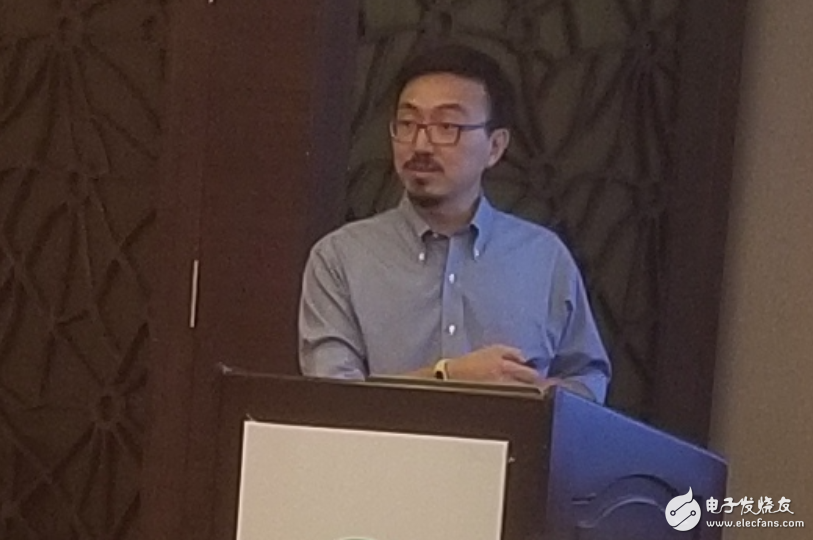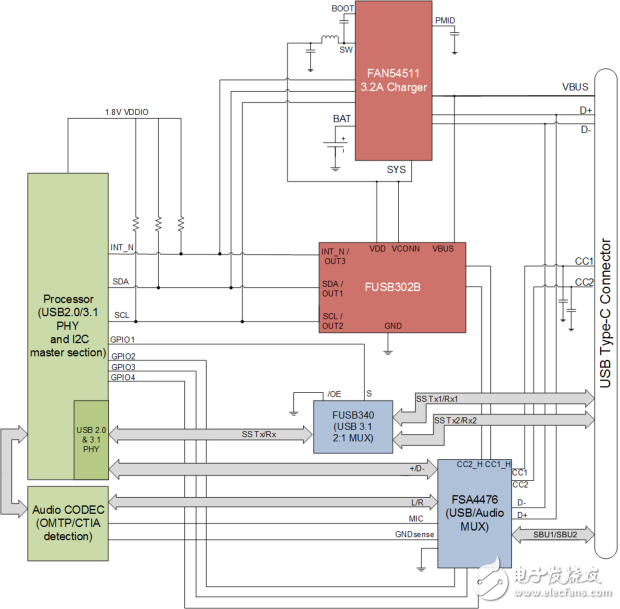The USB type-c interface is a type of USB interface, which is an interface standard (interface type). The most obvious feature of USB type-c is to support the blind insertion of the front and back. With this feature, the friends no longer have to worry about the U disk always inserting the wrong direction.
The early interface of the smartphone is to solve the data transmission and charging functions through Micro USB and Mini USB. The former can solve the problems of short interface life and large size of the interface, and is compatible with the USB1.1/2.0 standard and OTG function at that time. Still in use. As mobile phone manufacturers become more and more demanding on the fuselage, the body is getting thinner and thinner, and the transmission speed and charging speed are getting higher and higher. It seems that Micro USB is not the best solution.
Therefore, we have seen that in the mobile phone industry in the past two years, there has emerged an emerging interface - USB type-c, which has the strong compatibility of Micro USB, and realizes the unification of data transmission and power supply, low power consumption and occupation. Smaller size, faster transfer and charging, and powerful scalability give you an unprecedented experience.
As a leader in the semiconductor industry, ON Semiconductor's products have been the industry's attention among domestic hardware manufacturers. Recently, Mr. Li Wenhui, Senior Field Application Engineering Manager of ON Semiconductor Mobile Market, interpret the latest USB standards and market trends, and share the complete solution of USB type-c on mobile devices.

Li Wenhui, Senior Field Application Engineering Manager, ON Semiconductor Mobile Market
With the increasing use of mobile mobile devices, and the lack of breakthroughs in battery technology, people are increasingly demanding the speed of charging, so with the development of technology, USB Type-C and Quick Charge (QC) Two technologies have become the standard for mobile phone devices as fast charging.
Of course, not all Type-C interfaces support true fast charging standards, and fast charging is not possible for Type-C interfaces that only support the USB 2.0 standard. ON Semiconductor's USB Type-C solution is supported by a power controller that supports the standard USB 3.1 interface while also supporting the USB-PD protocol and voltage regulation based on the device's power requirements.

According to reports, ON Semiconductor through the NCP81239 USB-PD synchronous buck-boost controller, can achieve a variety of fast charging protocols, including USB-PD/QC2.0/QC3.0, it has four-switch single-inductor lifting function. Adapting the wide input and wide output voltage range, and designing through the I2C bus, the regulated output voltage becomes safe and reliable. The internal feedback reference voltage is set by the built-in 9-bit DAC, and the output voltage range can be set by external feedback. It is convenient to set the output voltage or set the output voltage compensation with the I2C interface.
The features and perfect protection features of ON Semiconductor's NCP81239 make it ideal for high-reliability applications requiring wide voltage input and adjustable voltage output, which eliminates the inconvenience or unreliability of conventional H-bridge buck-boost. The problem, and supports the input and output voltage range of 4.5-28V. The dynamic programmable operating frequency ranges from 150kHz to 1.2MHz, making it easy to design in different applications.

USB PD/Charging/Super Speed/Audio Solution
ON Semiconductor offers a full line of flexible USB Type-C solutions that support high current charging and support 10Ghz ultra-high speed data channels with the industry's lowest power consumption and 95% smaller footprint than MCU solutions on the market. area. Li Wenhui said that in terms of data transmission, the transmission rate can reach 5Gbps or 10Gbps in USB3.0 and Type-C environments. This requires a single-channel re-driver to reduce inter-code crosstalk and reduce unwanted signal distortion to affect transmission. 3.x eye height and total jitter specifications.
Compared to other competing devices on the market, ON Semiconductor's one device can simultaneously support USB3.1 Gen 1 (5Gbps) and Gen 2 (10Gbps) data rates, with a 20% increase in eye height and a 20% reduction in jitter.

Single channel re-driver competing device comparison
From the above figure, we found that other competing device solutions only support 5Gbps, and the eye height and jitter are not as good as ON Semiconductor. On the active cable, Semiconductor Semiconductor can also increase the strength and performance of the signal by adding a re-driver.
This is due in fact to the FUSB340: 10Gbps USB3.1 ultra-high-speed switch, USB SuperSpeed ​​Gen1 for 5Gbps data and Gen2 and 10V Gbps data for Gen2 and Reversible cable types that require switching in Type-C applications, in addition to the high speeds that provide superior performance. The data transmission protocol also has eight characteristics:
USB 3.1 (Gen 2) – 10Gbps
10GHz bandwidth
VDD: 1.5V – 5.0V
2KV HBM ESD protection
-1dB insertion loss (at 2.5GHz)
Low active power consumption 12uA
Low shutdown power consumption 1uA
18-pin TMLP, 0.4 mm pitch
(2.0mm x 2.8mm x 0.4mm)
The FUSB340 ultra-high-speed switch not only meets the USB 3.1 standard, but is at least 40% smaller than the competition solution. It is not only suitable for mobile phones, but also can be used in tablets and laptops to plug in Type-C USB 3.1 connectors. in. Finally, Li Wenhui also revealed that ON Semiconductor is currently developing USB 3.1 type C connector protection technology, which can be used to protect ultra-high speed lines through two ON Semiconductor ESD8704 devices. Let us wait and see.
A new rule from the Drug Enforcement Administration (DEA) threatens to upend the American hemp industry, and could even result in criminal prosecutions for manufacturers of CBD and delta-8 THC products.
The DEA says the [interim final rule," issued Aug. 20, is simply a matter of adjusting its own regulations to account for changes to the Controlled Substances Act that were mandated by the 2018 Farm Bill (or Agricultural Improvement Act) that legalized hemp and CBD production. The new rule [merely conforms DEA`s regulations to the statutory amendments to the CSA that have already taken effect," says the agency. The new rule doesn`t break any ground, according to the DEA.
But many experts on cannabis and hemp law say the DEA rule creates a potential pathway the law enforcement agency could use to prosecute hemp processors and producers of CBD (cannabidiol) and delta-8 THC (or Δ8THC) products. There are two issues: partially processed CBD, and [synthetically derived" delta-8 THC.
Cbd Pod System Oem,Cbd Vape Pod Oem,Best Cbd Pod System,Cbd Pod System
Shenzhen MASON VAP Technology Co., Ltd. , https://www.disposablevapepenfactory.com